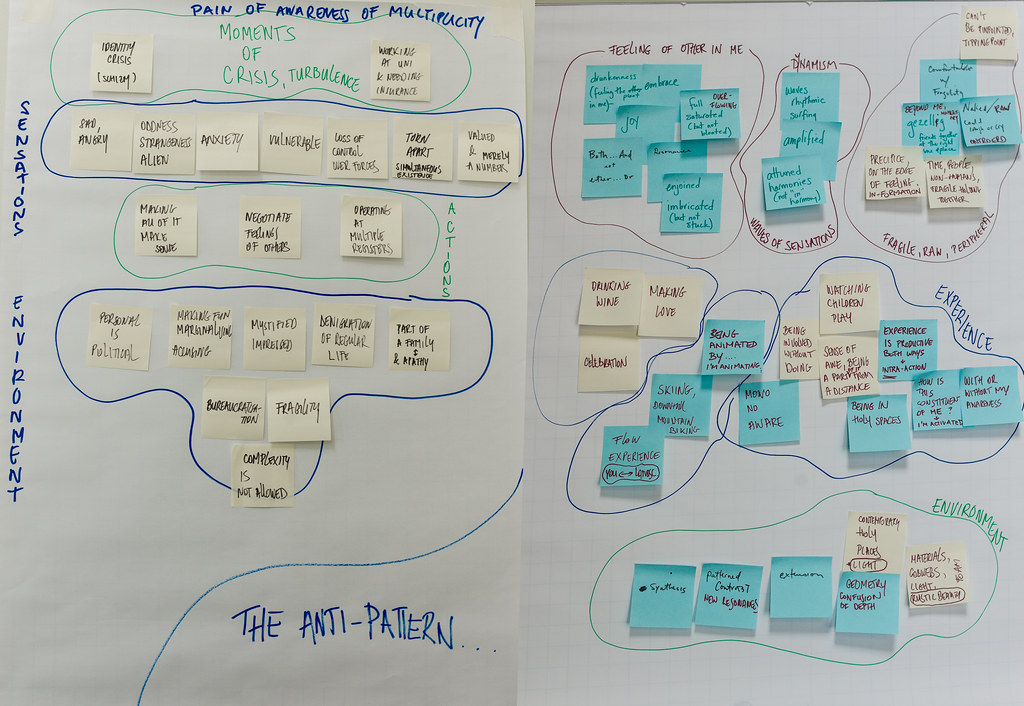Future Fabulators
Table of Contents
Animation and Animism
OBJECTIVE
What is it? To design an experience in which human subjectivity is felt as a temporary pattern that emerges from the interaction of human and nonhuman forces at a multiplicity of spatial and temporal scales.
What does it do? To expose how there is something magical in being animated by so many “codes,” and to find consistency among them. Maintaining the magic, animated layers is also deeply political: How dare you reduce me to one plane/code/meaning system?! [magical = irreducible?]
Why do it? Political stakes: We live in in a world in which there is increasingly only one coding system – neoliberalism. It’s political proposition to open up us up to a multiplicity of planes. This is reclaiming the many scales that animate us. It is reclaiming the magic of anthropos.
notes 2015-06-15

notes 2015-06-16


notes 2015-06-17


notes 2015-06-18


Design Process
facilitated by Maja Kuzmanovic and Nik Gaffney
- Free-form conversation about individual and collective wishes of the family, understanding of the content, context, expectations, etc.
- Affinity mapping to uncover connections and diversity of points of view on (japanese) animism, arising from individual interests of the residents
- Scoping the work using the GROW model from business coaching
- Moodboarding to tap into the visual thinking and get a sense of what the outcome might feel like
- Conversation based on the discovery phase of appreciative inquiry to uncover the qualities of the performative experiment the residents would like to design (sensations, actions/experiences, environment…)
- Individual exercise to find images, quotes, sounds, examples of lived experience etc. that would evoke the atmosphere of the experience the residents would like to create.
- After getting a good sense of the qualities and atmospheres of the experience, we moved onto more or less classical brainstorming (coming up with ideas and building on them, without discarding anything outright - using the improvisational technique of “yes and” and avoiding sentences starting with “yes but”
- Discussion about the follow-up process including documentation, user journeys, experience prototyping and possible models for sustainable collaboration between philosophers and artists/designers possibly modelled as a temporary atelier. The residents agreed to write up their experience of the residency, the process and the outcomes.
- The children had their own creative process, guided by Rasa Alksnyte including watching Japanese anime, compositing physical 'spirits' they created from found objects and plants with photographs taken in the city, collaging written stories, photos and drawings based on a game of 'exquisite corpse'.
- Throughout the residency, socialising, communal meals and interaction between the whole family and all of the FoAM collaborators was an important part of the process.
References and Reading
- Blog post by Stacey describing the content of the residency: Animation and Animism
- Papapetros, Spyros. On the animation of the inorganic: art, architecture, and the extension of life.
